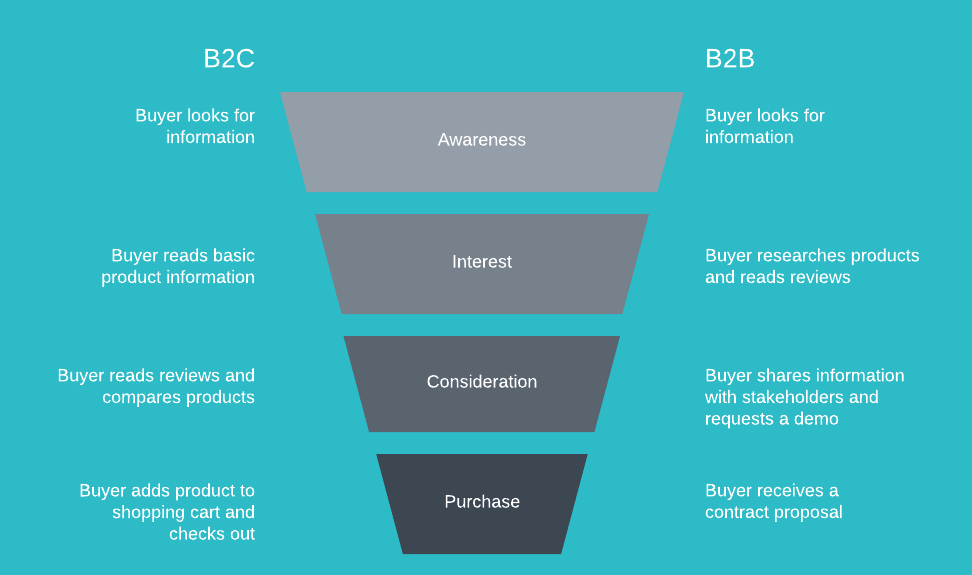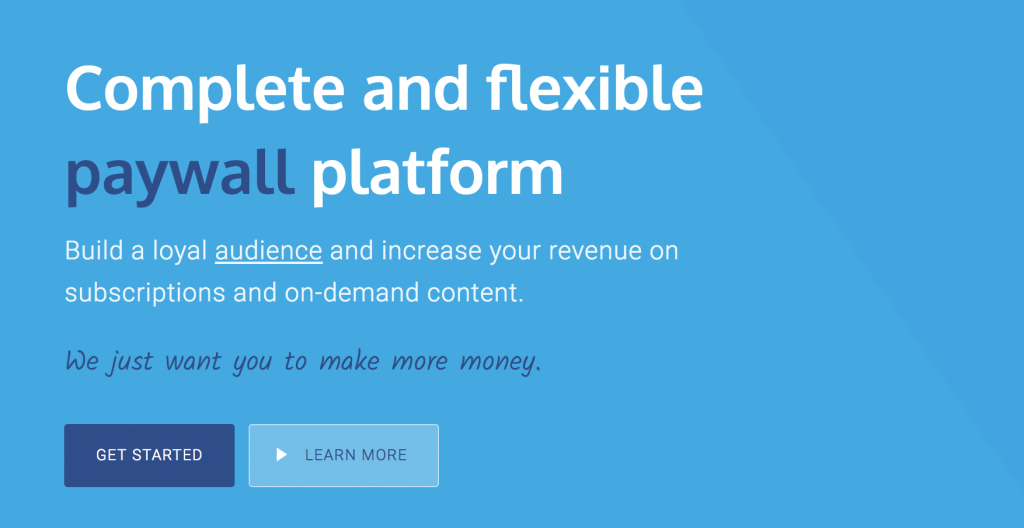Every professional and serious business owning a website will tell you that in order to be successful publisher you need to get conversions from buyers in order to monetize your content efforts. However, this process involves a lot of hard work and planning to put the monetization plans in place. And the fruits of your work will not be visible overnight.
Following the right strategies will get you on the right path to success. There are several ways to approach conversion optimization to gain more buyers and ultimately increase sales.
With conversion optimization at the forefront, you can identify what assets may be worth adding to your revenue stream based on your marketing and business objectives. These could be anything from physical products, digital products, eCommerce capabilities, premium content subscriptions, education videos, affiliate programs, or simply the use of display ads on your site.
The broad definition from Wikipedia says this:
“In internet marketing, conversion optimization, or conversion rate optimization (CRO) is a system for increasing the percentage of visitors to a website that convert into customers, or more generally, take any desired action on a webpage. It is commonly referred to as CRO.”
Every page on your website should be designed to engage your visitors with the best experience they can get. If they are happy with what they see and read on the website, they will give you the chance of converting them to a subscriber, customer or full-fledged member of your tribe. That’s why the conversion optimization process is the backbone of any good monetization strategy.
Conversion rate optimization is a way of increasing the number of people who take an action on your website. This action can be giving you their email address as part of an opt-in or filling out a form or simply building enough trust with your brand that they decide to make a purchase.
Put in simple words, your visitor takes the action that you most want them to take.
That means that your conversion rate comes down to this simple formula:
![]()
Let’s analyze the 5 most important conversion rate optimization strategies that you can implement to your website to improve your conversion rate and sales numbers.
First off, you need to create a buyers persona. Buyer personas or marketing personas are imaginary representations of businesses’ ideal customers. They are really helpful in terms of marketing, sales, product and services by internalizing the ideal customer we aim to target.
You can use a buyer profiling exercise to define or create your specific buyers persona(s). This means defining persona’s primary needs, wants and pain points. It’s very important to ask “WHY” questions as they can give you the most relevant answers.

Regarding website content, you want to think about how your audience’s needs might translate into actual online research activities. You also want to determine both the online resources and keywords that might be used when doing this research.
There are various questions that you can ask your customers in order to profile your buyers persona(s). Also, the number of free templates and tools to build personas has greatly improved in the past couple of years, so you can easily leverage those to your benefit.
Answering the questions from your chosen buyer persona template become what we call Key Visitor Tasks (KVTs) that later need to be mapped out within your website’s content and information architecture.
Now that you have your KVTs defined, you can easily diagram the high-level flow of your online marketing efforts so that all parties involved information architecture, user experience professionals copywriters, SEO specialist can understand the primary goals of your website.
But something else you also need to define is Customer Value Proposition. Customer value proposition, or CVP for short, describes the added value that you bring to your customers so that they ultimately choose your company over your competition.
You can start by creating a complete online marketing funnel diagram that displays each of the acquisition, conversion, and follow-up and nurturing components of your marketing efforts like this:

Your CVP can also be a simple one liner, or include all of the following pieces:
Take a look at InPlayer’s example for people who want to monetize their content with a paywall solution:

It instantly tells the potential customers what they get (paywall platform), why they should use them (increase revenue) and what makes it super valuable (it’s very fast and flexible).
Note how each conversion goal has been called out and numbered. The next step is to map these goals to linear conversion paths within your content.
In your business, revenue is your most important success indicator, so stay tuned as we’ll continue our overview of the following 4 steps from the conversion optimization ladder.
Every professional and serious business owning a website will tell you that in order to be successful publisher you need to get conversions from buyers in order to monetize your content efforts. However, this process involves a lot of hard work and planning to put the monetization plans in place. And the fruits of your work will not be visible overnight.
Following the right strategies will get you on the right path to success. There are several ways to approach conversion optimization to gain more buyers and ultimately increase sales.
With conversion optimization at the forefront, you can identify what assets may be worth adding to your revenue stream based on your marketing and business objectives. These could be anything from physical products, digital products, eCommerce capabilities, premium content subscriptions, education videos, affiliate programs, or simply the use of display ads on your site.
The broad definition from Wikipedia says this:
“In internet marketing, conversion optimization, or conversion rate optimization (CRO) is a system for increasing the percentage of visitors to a website that convert into customers, or more generally, take any desired action on a webpage. It is commonly referred to as CRO.”
Every page on your website should be designed to engage your visitors with the best experience they can get. If they are happy with what they see and read on the website, they will give you the chance of converting them to a subscriber, customer or full-fledged member of your tribe. That’s why the conversion optimization process is the backbone of any good monetization strategy.
Conversion rate optimization is a way of increasing the number of people who take an action on your website. This action can be giving you their email address as part of an opt-in or filling out a form or simply building enough trust with your brand that they decide to make a purchase.
Put in simple words, your visitor takes the action that you most want them to take.
That means that your conversion rate comes down to this simple formula:
![]()
Let’s analyze the 5 most important conversion rate optimization strategies that you can implement to your website to improve your conversion rate and sales numbers.
First off, you need to create a buyers persona. Buyer personas or marketing personas are imaginary representations of businesses’ ideal customers. They are really helpful in terms of marketing, sales, product and services by internalizing the ideal customer we aim to target.
You can use a buyer profiling exercise to define or create your specific buyers persona(s). This means defining persona’s primary needs, wants and pain points. It’s very important to ask “WHY” questions as they can give you the most relevant answers.

Regarding website content, you want to think about how your audience’s needs might translate into actual online research activities. You also want to determine both the online resources and keywords that might be used when doing this research.
There are various questions that you can ask your customers in order to profile your buyers persona(s). Also, the number of free templates and tools to build personas has greatly improved in the past couple of years, so you can easily leverage those to your benefit.
Answering the questions from your chosen buyer persona template become what we call Key Visitor Tasks (KVTs) that later need to be mapped out within your website’s content and information architecture.
Now that you have your KVTs defined, you can easily diagram the high-level flow of your online marketing efforts so that all parties involved information architecture, user experience professionals copywriters, SEO specialist can understand the primary goals of your website.
But something else you also need to define is Customer Value Proposition. Customer value proposition, or CVP for short, describes the added value that you bring to your customers so that they ultimately choose your company over your competition.
You can start by creating a complete online marketing funnel diagram that displays each of the acquisition, conversion, and follow-up and nurturing components of your marketing efforts like this:

Your CVP can also be a simple one liner, or include all of the following pieces:
Take a look at InPlayer’s example for people who want to monetize their content with a paywall solution:

It instantly tells the potential customers what they get (paywall platform), why they should use them (increase revenue) and what makes it super valuable (it’s very fast and flexible).
Note how each conversion goal has been called out and numbered. The next step is to map these goals to linear conversion paths within your content.
In your business, revenue is your most important success indicator, so stay tuned as we’ll continue our overview of the following 4 steps from the conversion optimization ladder.
As viewers continue to migrate in droves from terrestrial television and cable packages to over-the-top streaming providers, sports leagues and organizations can’t help but take notice. As far back as…
Bands and musicians have it tougher than ever. Building a following, serving the interests of fans and making a living (or even simply paying for expenses) playing music was a…
Patreon, Substack and other content creation membership platforms are all the rage right now – and with good reason. They can help a writer, artist or influencer not only build…